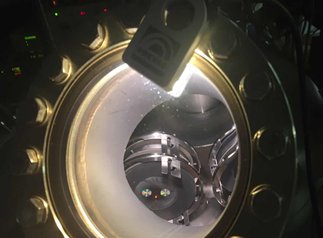
CRHEA's main research activity is related to semiconductor epitaxy. The term "epitaxy", derived from the Greek "epi" (above) and "taxis" (order) was proposed in 1928 by the French mineralogist Louis Royer to designate the juxtaposition of two crystalline species. Currently, the term epitaxy is used for any monocrystalline deposit whose orientation is fixed by a substrate. If this substrate is of the same nature as the deposit, it is called homoepitaxy, if it is of a different nature, the term heteroepitaxy is used. The epitaxial materials are analyzed by different techniques of structural and optical characterization. The materials are then processed as micro and nanodevices in a clean room environment.
The research activity at CRHEA is organized around three research teams, a joint research service and transverse axes. The three research teams are the Electro team, the Opto team and the Nano team. The common research service conducts a specific research activity and a research support activity. The transverse axes bring together researchers and engineers from the different teams and enable them to conduct a multidisciplinary activity that responds to important societal challenges.


